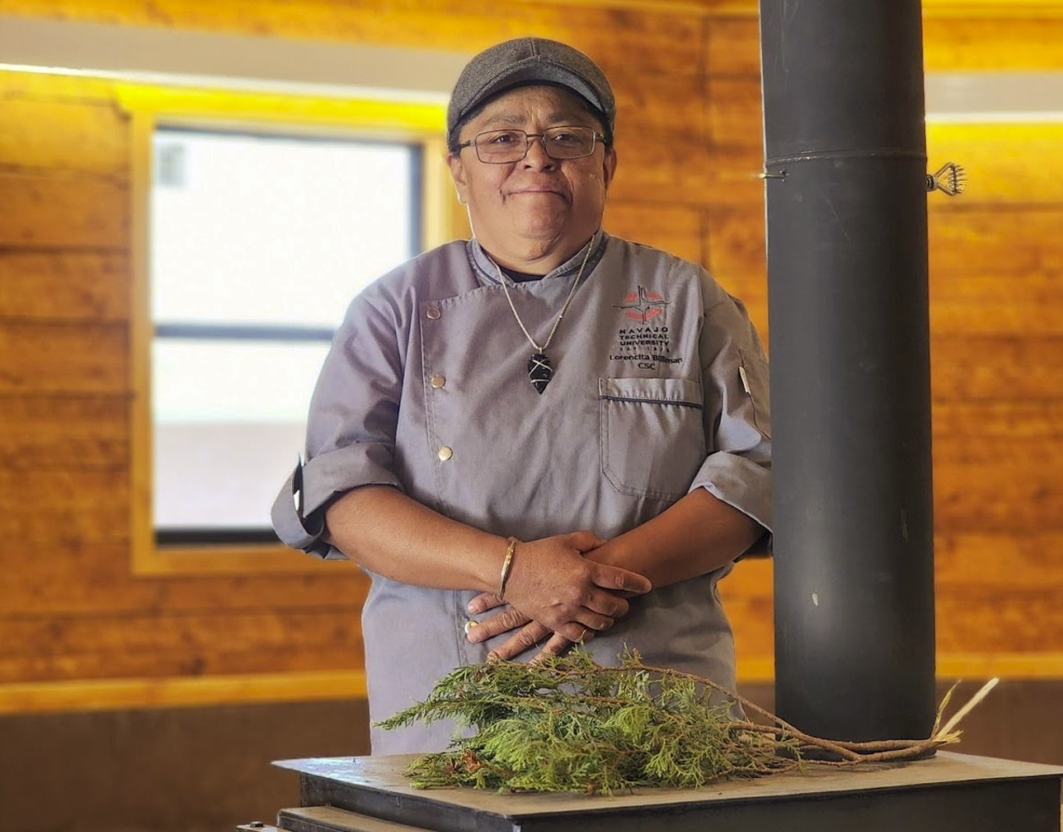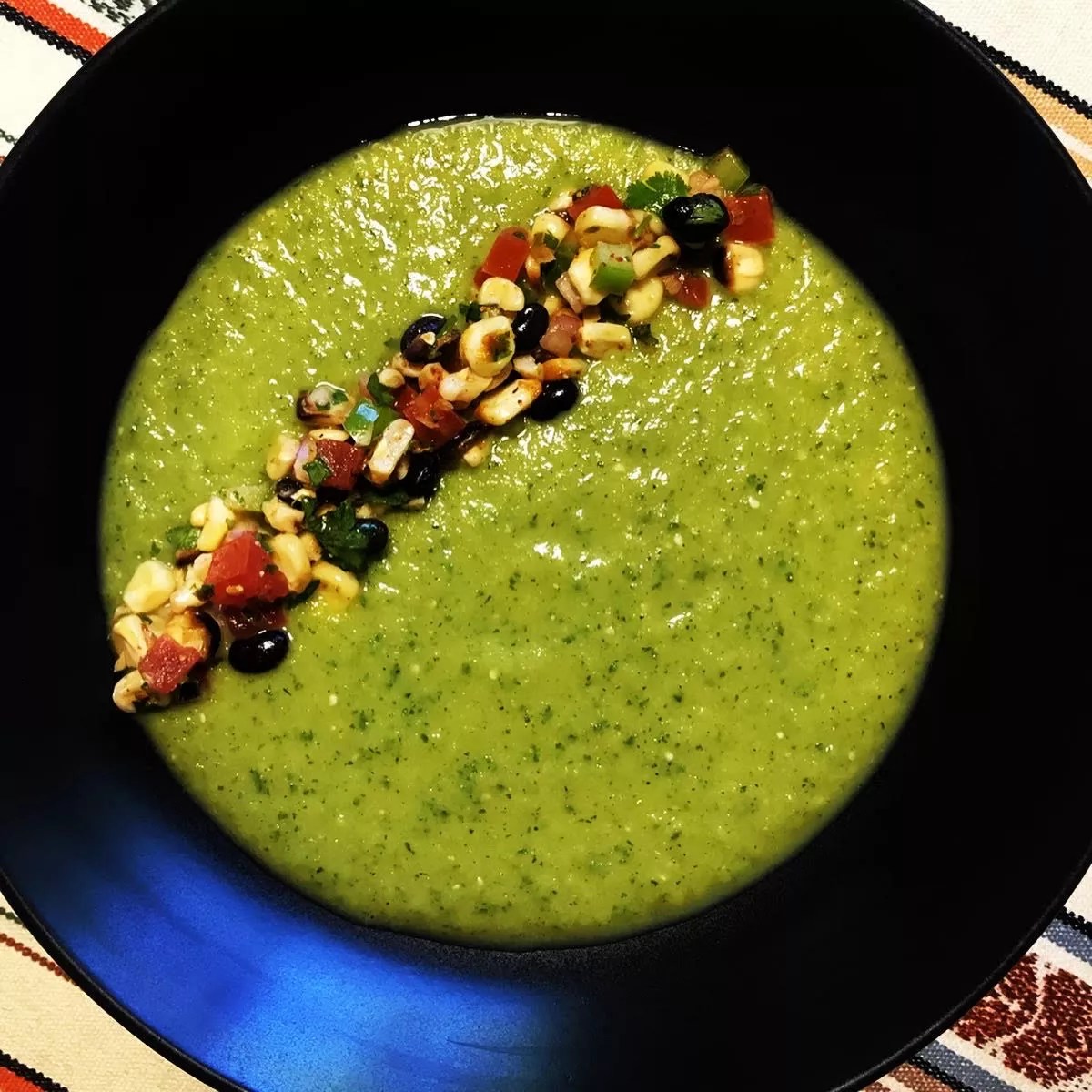
Lorencita Billiman

Audio By Carbonatix
Many of the foods we eat on a daily basis – from chocolate, blueberries and avocado to peanuts, cranberries and walnuts – are native to the Western Hemisphere and were here long before non-Indigenous people settled in the United States. While these ingredients have been modified to fit the cuisine of foreign cultures, it is very difficult to find them prepared as they were originally in Indigenous cultures.
At 5:30 p.m. on Wednesday, June 15, at the Cable Center (2000 South Buchtel Boulevard), you’ll be able to do just that as the American Indian College Fund brings together some well-known Native chefs for a meal showcasing high-end Indigenous cuisine. Tickets to the event, called Denver EATSS, are $85 and available online.
With grocery stores supplying food from all corners of the globe in order to satisfy our every craving, the concept of eating seasonally has all but disappeared. Proponents of the farm-to-table movement have inched Americans closer to a seasonal diet, but the Indigenous cultures of the United States have a deep-rooted connection to eating with the seasons.
The story of colonialization in America is notoriously traumatic and led to the disappearance of many cultural traditions, languages and rich history. However, as we experience cracks in our industrial food system, a number of Indigenous practices are showing resilience against fluctuating commodities.
We’re thankful for you. Are you thankful for us?
We feel thankful for our staff and for the privilege of fulfilling our mission to be an unparalleled source of information and insight in Denver. We’re aiming to raise $50,000 by December 31, so we can continue covering what matters most to this community.
Help us continue giving back to Denver.
“Before we were colonized, we didn’t have commodity food, diabetes, alcoholism, things like that,” notes Lorencita Billiman, technical instructor in culinary arts at Navajo Technical University. “For today’s generation, especially in the culinary world, I try to get my students to understand our cultural foods and make them realize they can make a greenhouse in the back of their house to grow produce, understand three sisters (corn, beans and squash), how to grind corn, etc. In the beginning of my cooking experience, there was no electricity, no running water, so we had to improvise. We used a wooden stove and hauled our water. … Now, with today’s society, we are coming back to our traditional cultural foods, and we aren’t necessarily doing it how they used to do it back in the day. We are modernizing it.”

Andrea Murdoch’s roasted tomatillo gazpacho garnished with a charred-corn pico.
Andrea Murdoch
Billiman will be serving a traditional Navajo cake at the event, a dish that is steeped in an important Navajo tradition. “The story behind the Navajo cake is, when we hit puberty as females, we spend four days grinding ingredients, doing kitchen work and preparing to cook this cake in a ground oven,” Billiman explains. “On the first day, we start a fire in that oven, and it goes until the third day. Then we put the dough in.”
She says that the size of the cake is measured based on how far the person making it can jump – “from the front of our feet to the heel of the other foot.” Then it’s put together in layers, starting with corn husk followed by cake batter, then more corn husk. Wet paper bags are placed on top, then covered with ashes. “A medicine man will sing all night and do prayers all night while the cake cooks,” she adds. “In those four days, we also must run in four directions. Becoming a woman, and knowing what we want to do in life, we get advice from our female elderlies, who encourage us. They prepare us for life.”
Billiman’s take on Navajo cake is made using a tamale-style technique and is topped with chiiÅ‚chin (Navajo for sumac berry).
Beyond tasting good, Billiman stresses the fact that many of these traditional recipes are also very nutritious. “How is that our elderlies were able to understand?” she wonders. “We have this dish called blue corn mush. It’s ground blue corn. If you make blue corn mush in just water, it turns purple. But with [the Navajo], we have cedar ash that we add that keeps it blue. The healthy benefit of that is, when you put that ash in the blue corn mash, it gives you four times times the calcium that you would get from milk.” To modernize the recipe, some Navajo chefs have created a blue corn mush parfait with fresh fruits, pine nuts (piñon) and whipped cream.
Along with being introduced to the storied history of Native American cuisine, guests at Denver EATSS will learn more about the concept of food sovereignty. Another participating chef, Andrea Murdoch of Four Directions Cuisine, explains, “The baseline definition of food sovereignty is just autonomy; how we grow, what we grow, how we consume it. As our population experiences budget restraints, we are growing our own foods. I am growing my own crop of tomatoes every year – I know how to can it, hydrate it and otherwise preserve it, and as a result, I’m not worried about the fluctuating prices of tomatoes in the grocery stores.”
But the concept also plays an important role in Native American culture, in particular. “Food sovereignty is an act of survival, resilience and resistance,” Murdoch continues. “Colonialization was meant to exterminate us, and yet we are still here. And that is through holding on to our cultural ways, especially our food systems. The entire world is experiencing issues with food systems, supply-chain issues, obesity (not just in the indigenous community), heart health…and we have done this to ourselves. There’s cultural, survival and environmental aspects to all of it. If we keep going the way we are going, the weather phenomena, like unseasonably high and low temperatures and wildfires, will continue.”
The pandemic opened our eyes to the fragility of our industrialized food system, and these chefs may have uncovered key factors necessary for a more resilient one. The June 15 event is open to the public, and many important lessons regarding food, sustainable agriculture and native history will be on display as Indigenous chefs from around the country tell their stories. Don’t miss this rare opportunity to taste Native American ingredients prepared with a modern culinary approach.